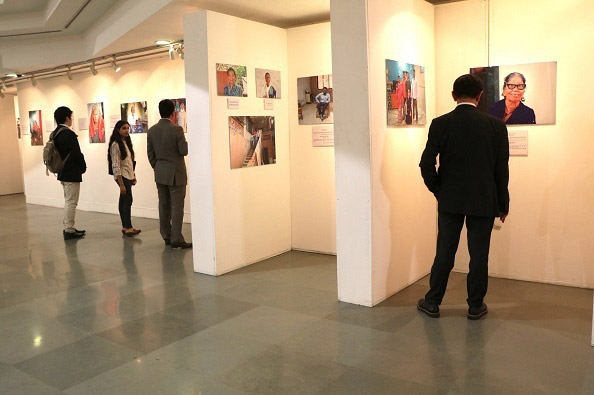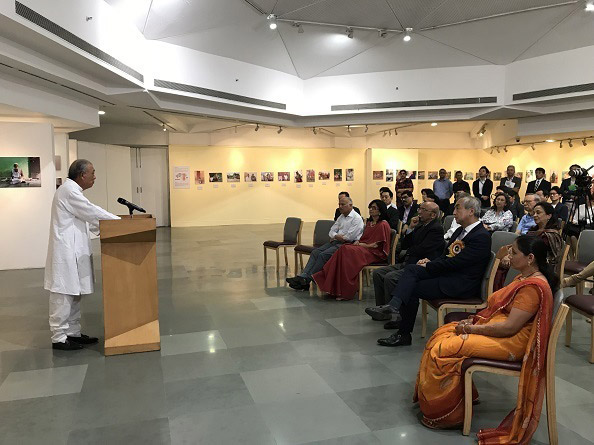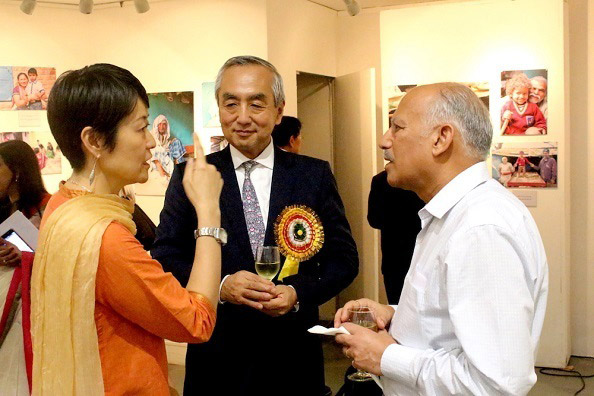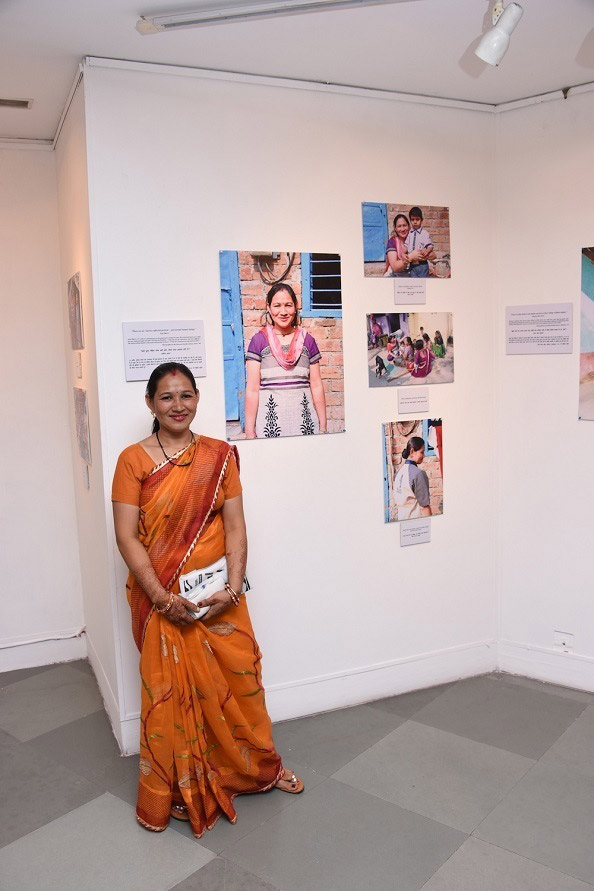OUR LIVES Leprosy-Themed Photo Exhibition1st exhibition in India of 90 photos taken in roughly 60 countries
The Nippon Foundation, which has been working to eliminate leprosy for more than 40 years, held a photo exhibition in New Delhi, India, from April 20 to May 1, to promote a better understanding of the disease. Titled OUR LIVES, the exhibition featured 90 photographs of persons affected by leprosy and life in leprosy colonies, taken by The Nippon Foundation photographer Natsuko Tominaga.

The photographs were taken in the course of Ms. Tominaga’s travels over the past 16 years to roughly 60 countries with The Nippon Foundation Chairman Yohei Sasakawa, with 50 of the photographs taken in India and 40 taken in other countries.
An opening reception was held on April 19 at the India International Centre, where the exhibition was held, and was attended by roughly 70 people including Mr. Sasakawa, as well as Kenji Hiramatsu, Ambassador of Japan to India, Air Marshal Naresh Verma (Ret.), Director of the India International Centre, and representatives of 16 Japanese companies operating in India.

Welcoming the guests, Mr. Sasakawa noted, “When Mahatma Gandhi was invited to the opening of a facility for persons affected by leprosy, he commented that rather than an opening, he would be happier to attend the closing ceremony of a leprosy facility. I also pray that in 50 years leprosy will be a disease that is not a cause for concern. I hope that the photos taken by Natusko Tominaga have historical value.”
Speaking next, Ms. Tominaga called for action from the attendees. “Please tell your family, friends, or colleagues that you came to this OUR LIVES photo exhibition. And please share your impression with them and share why leprosy is a disease that results in discrimination, and think about what can be done about this. . . . If an idea is passed from person to person, it leads to a movement that can bring SOCIAL CHANGE.”
The exhibition was attended by members of the India International Centre, as well as people who learned about it from newspapers and the internet. Comments overheard included “This made a strong impression that all people are the same,” “I see the current situation, and I want to think about what can be done to improve the lives of these people,” and “I want to know what these people’s lives are like in five years.”

Commenting on the exhibition, the popular Indian actor R. Madhavan posted to his social media accounts, “Medically, leprosy is a curable disease. Emotionally, it plunders every last ounce of dignity you have – by making you feel rejected and unwanted.” He added, “I congratulate the WHO and Nippon Foundation for this photo exhibition of leprosy survivors, heroes who have a message to give – leprosy is just another curable disease!”
Echoing this point was Anita Bhavre, who modeled for the event’s publicity materials. She contracted leprosy as a child but was treated promptly and didn’t develop any disability. Today, Ms. Bhavre works as a housekeeper at a hospital and is raising two sons. She enjoys getting together with people and passing on advice, and strives to motivate others. Her motto is, “There are no ‘leprosy-affected persons,’ just normal human beings.”

As one of the world’s oldest diseases, stigma and prejudice related to leprosy remain firmly rooted today, even though the disease is curable. This has a major impact not only on persons who contract the disease, but on their families as well. The Nippon Foundation intends to continue to work to eliminate this stigma and discrimination.
Related Link
Contact
Communications Department
The Nippon Foundation
- E-mail:cc@ps.nippon-foundation.or.jp



